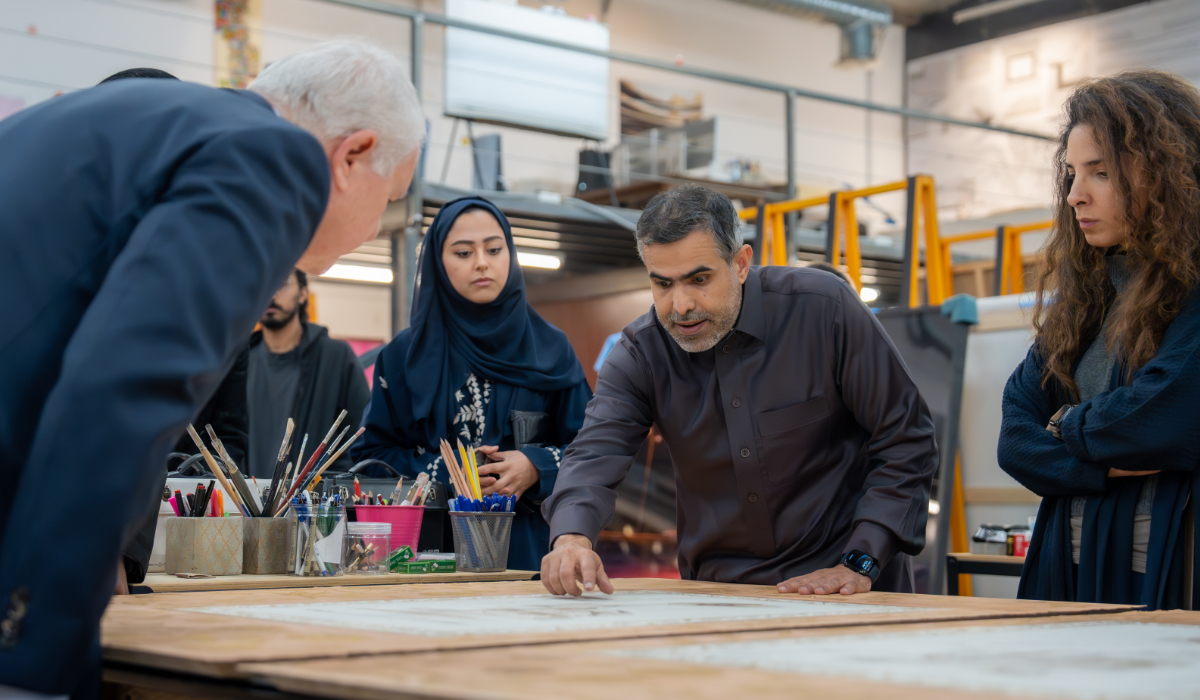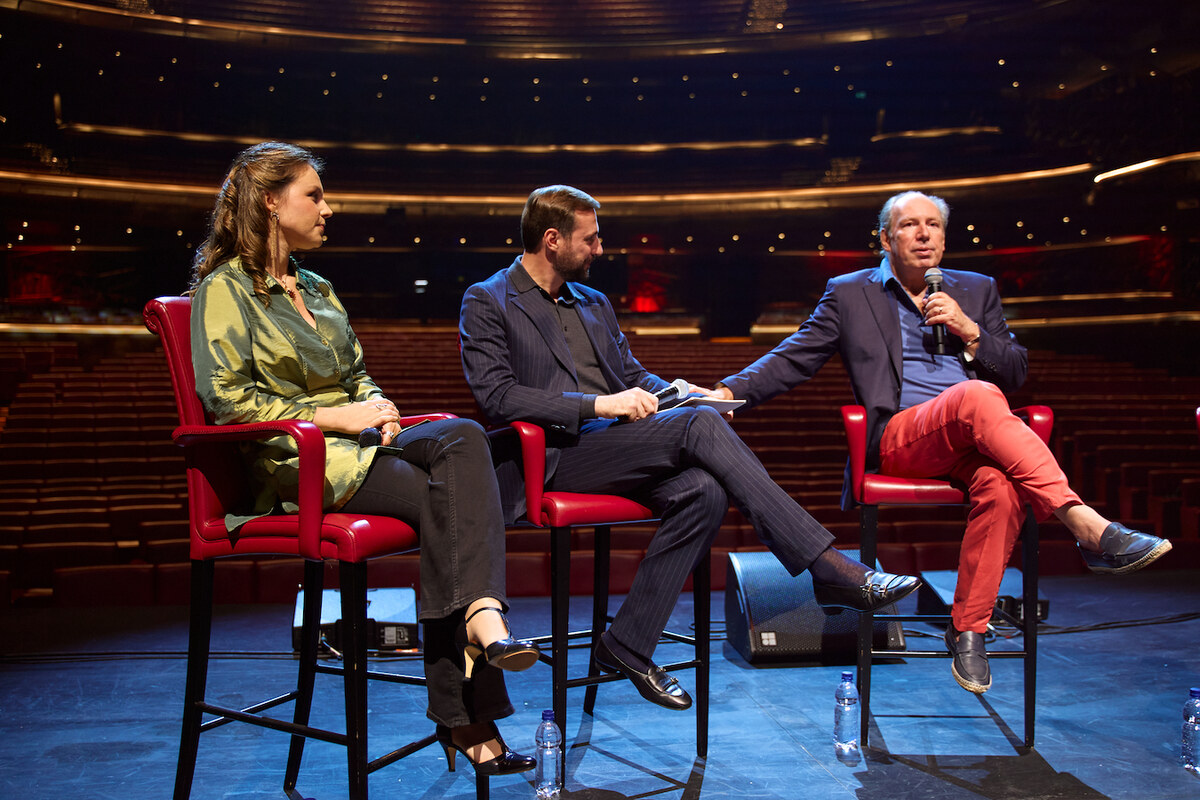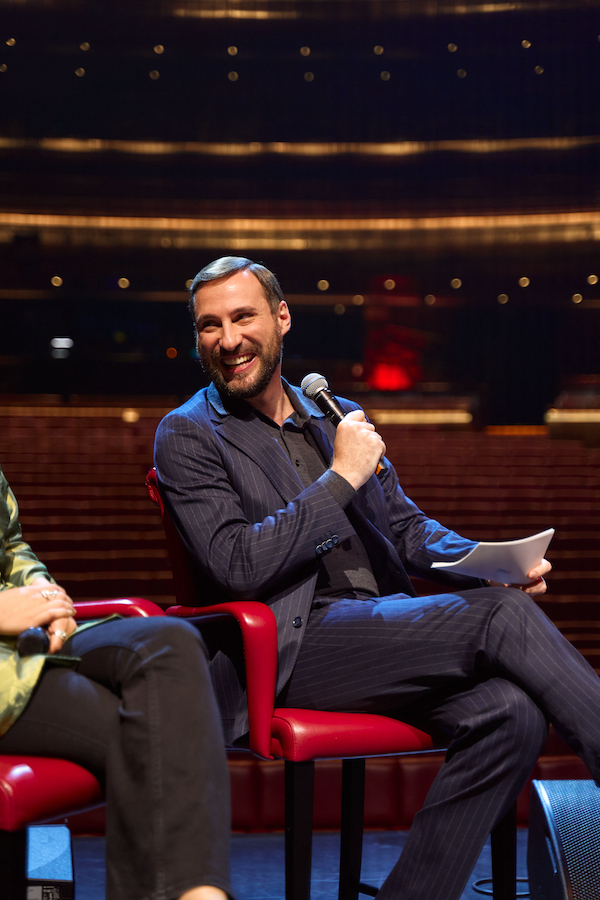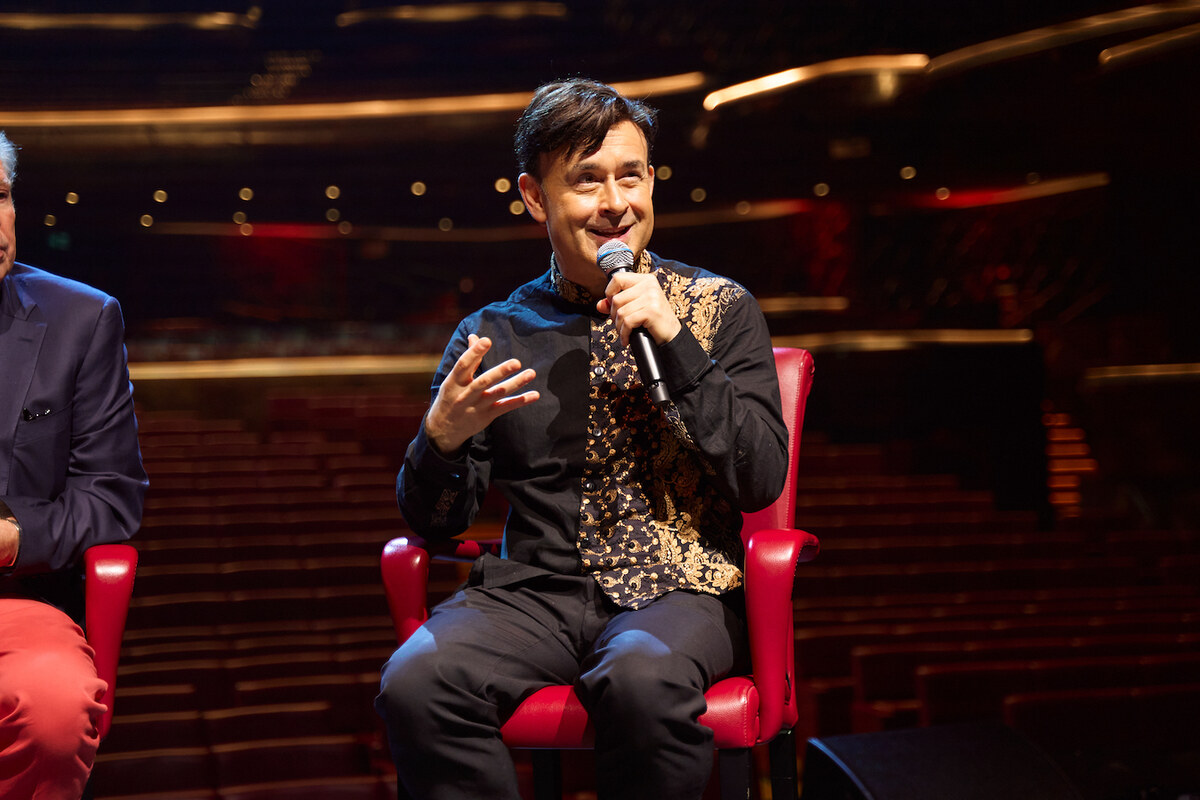TOKYO: TV Tokyo will broadcast on Sunday the first episode of Saudi Arabian anime, “The Woodcutter’s Treasure.”
The animated co-production is the first of its kind between Japan’s Toei Animation and Saudi Arabia’s Manga Productions, an affiliated company of Crown Prince Mohammed bin Salman’s MiSK Foundation.
The cartoon will run for 13 episodes, each 20-minute-long episode is based on Saudi Arabian folklore and aimed at children and families. The cartoon will be in both Arabic and Japanese.
The Saudi Press Agency said the cartoon will be aired during primetime hours.
A senior producer at TV Tokyo was quoted as saying: “We are delighted that the first episode of The Woodcutter’s Treasure will be shown for the first time on Japanese television, even prior to airing it in the Arab world.
“It's story is of global nature and reminds us of the fascinating ancient stories from Japanese history.”
For the first time, Tokyo TV to air Saudi anime ‘Woodcutter’s Treasure’
For the first time, Tokyo TV to air Saudi anime ‘Woodcutter’s Treasure’

Cultural convergence: Saudi artist, US jazz legend unite in an evening of musical exchange

RIYADH: In an evening of musical and cultural exchange, Saudi artist Ahmed Mater hosted an American delegation of musicians featuring jazz legend Herbie Hancock, Manhattan Transfer singer Janis Siegel, and local Saudi artists in his studio in JAX on Monday.
“One of the most important aspects of this visit was the arts. The arts intersect and converge … art such as jazz, contemporary art, visual art, there is a dialogue between them,” Mater told Arab News.
He also underlined the importance of “dialogue between art that is local, Saudi, and historical, and art that is western, American, (such as) jazz.”

Mater himself specializes in a range of art forms including photography, video, sound, installations, video art, filmmaking and drawing.
His studio in JAX is filled with historical books, vintage film reels, and equipment, along with art supplies that he offers to artists for learning and creating. His mission is to use the studio as a foundation to support and nurture artistic talent.
Mater welcomed local Saudi artists and American musicians from the Herbie Hancock Institute of Jazz Performance at the University of California, Los Angeles to his studio for a private tour and discussion.
Davida MacDonald, cultural attache at the US Embassy, attended the gathering and outlined her experience touring the studio with the delegation of musicians.
“Dr. Ahmed Mater is a legend … I always love coming here. It is just a place of creative ferment, there are filmmakers and artists and musicians,” she said. “We are so excited the US Embassy has partnered with the Saudi Music Commission and the Ministry of Culture to bring these jazz legends to the Kingdom for the first time.”
Hancock’s visit to the Kingdom is part of a celebration of Saudi-US cultural ties, sponsored by the Arts Envoy Program from the US Bureau of Educational and Cultural Affairs, the Saudi Music Commission, the Ministry of Culture, Music Hub, and the King Fahd Cultural Center.
“The genuine interest and affection with which this group of stellar musicians has been received by Saudi musicians, as well as the public at large, is just a testament to the energy, dynamism and creativity of the Saudi music scene,” she said.
The cultural attache underlined the importance of the visit, which she described as a “two-way exchange” with “American jazz musicians sharing their craft with Saudi musicians and learning from Saudi musicians.”
MacDonald said the tour was meant to be a five-minute affair but instead lasted an hour, with detailed discussions of art and music.
Mater said that Hancock had “a unique and memorable reaction” to the studio and that “the spirit of his visit was friendly and familiar, rather than formal,” leading to a longer and more comprehensive tour.
“For example, he (Hancock) was curious and asked me about Saudi artists and the music they make, such as Mohammed Abdu, whose pictures were presented in the studio.”
Mater highlighted that his colleague and fellow artist in the studio, Abdullah Al-Qarni, a qunun player and maker, was present and played alongside Hancock in a spur-of-the-moment performance.
“The studio team was present and Al-Qarni played the qunun and explained the eastern and western maqams. They worked on comparing how the sounds resonated,” he said.
Afterward, Al-Qarni and Mater presented Hancok with a qunun to take with him back to the US.
“It was a beautiful night for everyone,” Mater said. “Art, like jazz, fine art, and visual art … there is a dialogue between them, this is the beauty of today.”
Doha museum explores life and work of painter and sculptor Jean-Leon Gerome

DOHA: Mathaf: Arab Museum of Modern Art houses what could be described as an unlikely find for the Qatar-based institution.
“Le Barde Noir” — “The Black Bard” — is an oil-on-canvas painting by Jean-Leon Gerome, a French painter and sculptor who lived from 1824-1904. Created in 1888, it is as instantly captivating as it must have been when first created.

It features a character often said to be a Nubian musician, wrapped in pink fabric and sitting on a carpet as he stares out intensely. Behind him is an intricately tiled wall in blue hues, while his yellow shoes — similar to North African babouches — are placed neatly to one side.
The work, arguably one of Gerome’s most mesmerizing, bears many hallmarks of the Orientalist style pioneered by European artists in the 18th and 19th centuries that often featured imagined images of the eastern world.
The concept is explored, pondered and contested in “Seeing Is Believing: The Art and Influence of Gerome.” The exhibition, which runs at the museum until Feb. 22, sheds light on the artist’s legacy — how his art has both positively and adversely influenced depictions of the Middle East, North Africa, and South Asia region and continues to do so today.
Gerome was one of the most commercially successful European artists of the 19th century. At the time, he was celebrated as a visual storyteller and historian who brought the faraway lands of Greece, Rome and the East to life through his work.
Ultimately, it would be the artist’s representations of North Africa and the wider Arab world that would constitute his legacy. From 1855 to 1880 he travelled to Egypt, Turkey and other areas to create some of Orientalism’s most poignant and memorable representations.
The show includes almost 400 works of art, many drawn from the forthcoming Lusail Museum’s impressive collection of Orientalist art, including European depictions of the Arab world dating from the 16th to 19th centuries. It also includes major loans from Qatar Museums’ General Collections and institutions worldwide such as the Metropolitan Museum of Art in New York and the Islamic Arts Museum in Malaysia.
The exhibition has been organized as a legacy of the Qatar–France 2020 Year of Culture, a year-long program of collaborations between institutions across both countries. It is jointly produced by the Lusail Museum, which is set to open in 2029, and Mathaf: Arab Museum of Modern Art, both in Doha.

It takes an in-depth look at Gerome’s practice and oeuvre through three sections. The first, “A Wider Lens, A New Gerome,” is curated by Emily Weeks and presents some of the artist’s most prominent paintings. “Between Gerome and Photography: Truth is Stranger than Fiction” is curated by Giles Hudson, curator of photographs at the Lusail Museum, and highlights his influence on photography of the Arab world. The final section, “I Swear I Saw That,” is curated by Sara Raza and explores Gerome’s impact on contemporary art.
The third section includes specially commissioned works by artists such as Babi Badalov from Azerbaijan and Nadia Kaabi-Linke from Tunisia, who reinterpret Gerome for the 21st century.
Guest curator Raza told Arab News that the opportunity was a chance “to reassess Gerome’s art within the context of the problems of the larger Orientalist genre and its continuation and manifestation in art and society.”
She said none of the artists in her section were interested in Gerome and added: “However, what they were interested in exploring was Orientalism’s continuation through their own visual languages and the ideas of free appropriation.”
Limitless Orchestra marks world premiere at Dubai Opera with show honoring Johann Strauss, Hans Zimmer

DUBAI: Dubai Opera played host to a world premiere this week that reimagines orchestral music for a new generation of music lovers.
“Global Waltzing — from Johann Strauss to Hans Zimmer,” presented by The Limitless Orchestra, took place at the intimate venue at the heart of Dubai on Jan. 10 and 11.
The brainchild of Russian-German violinist and composer Aleksey Igudesman, the orchestra enjoys the distinguished patronage of legendary film composer Hans Zimmer, who also made a special guest appearance on stage on both nights.

Under Igudesman’s innovative “fail forward” approach, “The Limitless Orchestra” breathes new life into the traditional boundaries of symphonic artistry, blending timeless musical techniques with contemporary creativity to deliver an experience that is as daring as it is transformative.
“The world definitely does not need another orchestra, for sure, but I think the world needs this orchestra and other orchestras like it,” Igudesman said ahead of the show.
“The orchestra essentially has not changed, or an orchestra has not changed its format more or less for 150 years. It has become an institution, a very vital cultural institution. But everything that stays the same becomes stagnant and becomes a museum, and then dies eventually, and we do not want an orchestra to die. So, for me, I think launching the ‘Limitless’ orchestra with the help of my great friends is something that I just had to do, because I did not want to have the things that I love so much die, and I wanted to show a possible new way of doing things.”

The show sees the orchestra revitalize the timeless works of Johann Strauss, skillfully blending the cherished compositions of the Austrian king of the waltz with the epic film music of Hollywood legend Zimmer.
Zimmer, displaying his trademark humility, said: “I don’t think there are limitations to classical music. I would hate to go about ruining Bach or Mozart. That’s their music and we can have new music.
“I’m just a peasant of music. I write film music. But the weird thing is that every day I get to go out and hire an orchestra. I get to go out and play in arenas for 20,000 people. So, something is working with what I’m doing. I’m adding instruments to the orchestra, I’m adding playfulness.”

The program will showcase a dazzling fusion of classical and cinematic music through an innovative selection of compositions, including the opening piece, “Emperor Waltz, Sultan Style,” by Igudesman and Tristan Schulze, inspired by Johann Strauss.
Other pieces include “Sherlock Holmes Fantasy,” “From Time to Time — Inception Waltz,” and “The Banker’s Waltz.”
Igudesman, celebrated for his electrifying performances and whimsical approach to classical music, will perform original works and innovative compositions, accompanied by the mesmerizing voice of soprano Ekaterina Shelehova.
Saudi-backed film to screen at International Film Festival Rotterdam

DUBAI: The International Film Festival Rotterdam this week revealed its line-up for the 2025 edition, featuring the Red Sea Film Foundation-supported “Dead Dog” by Lebanese director Sarah Francis.
The film follows Walid and Aida, a husband and wife reunited after his long absence abroad. As they confront the emotional distance between them, secrets come to light, including Aida’s silence about their beloved dog Punto. Set against a backdrop of shifting dynamics and unspoken truths, “Dead Dog” explores themes of estrangement, trust, and the complexities of marriage.
The festival is set to take place from Jan. 30 to Feb. 9.
Netflix unveils season 2 trailer for ‘Mo’

DUBAI: Netflix this week released the trailer for the highly anticipated second season of Palestinian-American comedian Mohammed Amer’s award-winning series “Mo,” announcing its debut on Jan. 30.
The new trailer showcases the show’s signature humor and heartfelt moments as Mo Najjar, played by Amer, continues to navigate life as a Palestinian refugee in the US.
In season 2, he finds himself stuck on the other side of the border, desperately trying to make it back to Houston in time for his family’s important asylum hearing. With no passport and few options, he faces a series of unexpected challenges, including a new rival who jeopardizes his relationship with Maria and his signature falafel taco recipe.













